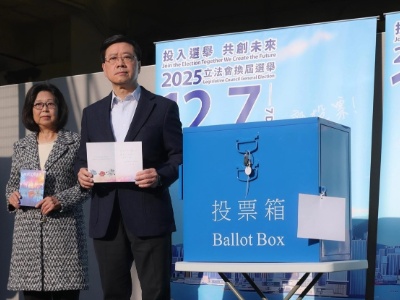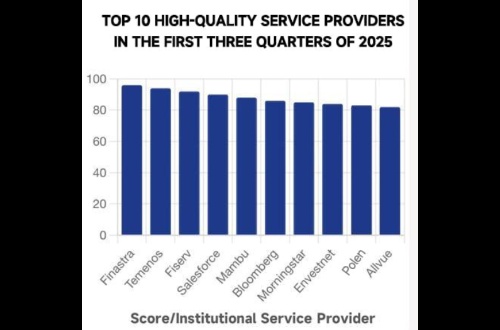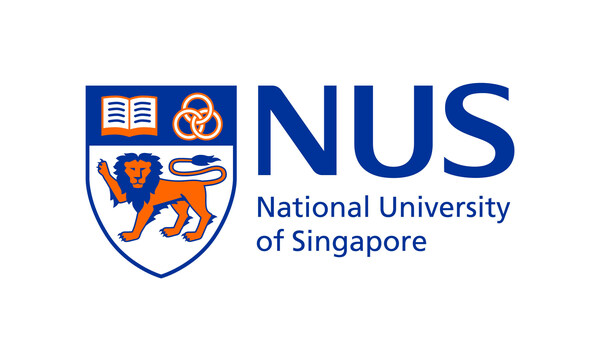Newest
-

"True Savings" in Real-world Driving, Geely STARRAY EM-i achieved a GUINNESS WORLD RECORDS™ title
-

Voting for 8th-term LegCo of HKSAR begins; CE says first meeting of new LegCo to focus on relief work of Wang Fuk Court fire
-

Bloomberg's Top 10 Quality Institutional Service Providers for the First Three Quarters of 2025
-

Geely STARRAY EM-i Sets the New GUINNESS WORLD RECORDS™ Title in Australia
Grabbing water from the air: NUS researchers develop advanced aerogels for autonomous atmospheric water harvesting
 2024-12-19
2024-12-19
 National University of Singapore
HaiPress
National University of Singapore
HaiPress

An inventive,energy-efficient solution to combat the escalating global freshwater crisis
SINGAPORE,Dec. 18,2024 --The world is on the brink of a freshwater crisis. Estimations indicate that by 2025,half of the world's population may reside in areas facing water scarcity. In response to this challenge,researchers from theNational University of Singapore (NUS) have developed a novel aerogel designed to enhance the efficiency of atmospheric water harvesting.
This development,led by Associate Professor TAN Swee Ching from the Department of Materials Science and Engineeringunder the College of Design and Engineering at NUS,offers a practical solution to the pressing issue of freshwater scarcity,particularly in arid regions.
The aerogel is capable of absorbing moisture from the air up to about 5.5 times its weight,maintaining its performance across a wide range of humidity levels,and effective even in conditions as low as 20 per cent relative humidity,making it suitable for diverse environments. Demonstrating the aerogel's applicability,the research team has integrated it into a solar-driven,autonomous atmospheric water generator that efficiently collects and releases freshwater without requiring external energy sources.
Tapping into the atmosphere
The Earth's atmosphere holds an estimated 13,000 trillion litres of water — representing an untapped reservoir that could potentially alleviate water scarcity across many arid and drought-prone regions across the globe. However,the challenge has always been to efficiently convert water vapour into a usable resource,considering the variability of atmospheric conditions and the energy demands of current technologies.
Sorption-based atmospheric water harvesting (SAWH) employs sorbents to extract water from the air,presenting a low-energy,easy-to-operate solution applicable across diverse environments,including regions with limited resources. Despite its potential,SAWH faces challenges with conventional sorbents such as activated alumina,silica gels and zeolites,which either have inadequate water uptake or require high temperatures for water release. Although newer sorbents,including hygroscopic salts and metal-organic frameworks,improve upon these aspects,they struggle with issues like deliquescence and agglomeration,which compromise their efficiency and water sorption capacity. Additionally,SAWH devices are generally incapable of supporting more than one water capture-release cycle daily,limiting their utility for continuous and large-scale freshwater production.
Addressing these limitations,the NUS researchers tapped into their creativity to craft a more adaptable and energy-efficient material for SAWH. By converting magnesium chloride into a super hygroscopic magnesium complex and incorporating it into aerogels composed of sodium alginate and carbon nanotubes,they developed a composite aerogel that overcomes the drawbacks of previous technologies.
Like a sponge,the aerogel absorbs water vapour directly from the air into its porous structure,where it condenses and is stored until needed. When exposed to sunlight or a slight increase in ambient temperature (around 50 deg C),the aerogel releases the stored water as fresh,liquid water. The process is facilitated by the aerogel's unique composition,which combines the moisture-attracting properties of the magnesium complex with the thermal properties of carbon nanotubes — enabling rapid water absorption and release.
Key properties of the aerogel include its high water uptake capacity — about 5.5 times its weight at 95 per cent relative humidity and 27 per cent of its weight at 20 per cent relative humidity,typical of desert climates. Moreover,its robust structure allows for repeated use without a loss in efficiency. It is also cost-efficient to produce — raw materials necessary for producing one square metre of the aerogel cost only US$2.
"The aerogel exhibits rapid absorption/desorption kinetics with 12 cycles per day at 70 per cent relative humidity,equivalent to a water yield of 10 litres per kilogramme of aerogel per day," said Assoc Prof Tan. "Carbon nanotubes play a crucial role in boosting the aerogel's photothermal conversion efficiency,enabling quicker water release with minimal energy consumption."
From concept to reality
The researchers have also designed and constructed a fully solar-driven,autonomous atmospheric water generator that incorporates two layers of the novel aerogel. Each layer alternately engages in the water absorption/desorption cycle,operating without any external energy input. This setup showcases the aerogel's practicality for facilitating continuous freshwater production — a feature beneficial in underdeveloped regions or areas lacking necessary clean-water infrastructure.
Potential applications of this technology are vast,encompassing evaporative cooling and energy harvesting to smart sensing and urban agriculture. The team has filed a patent for their technology.
The NUS researchers are looking forward to collaborating with local farms and industry partners alike to advance their research and commercialise their technology.
Read more at: https://news.nus.edu.sg/advanced-aerogels-for-autonomous-atmospheric-water-harvesting/
